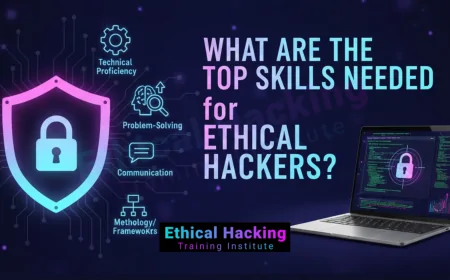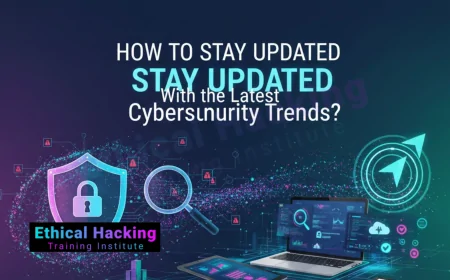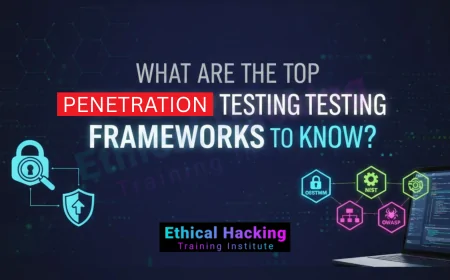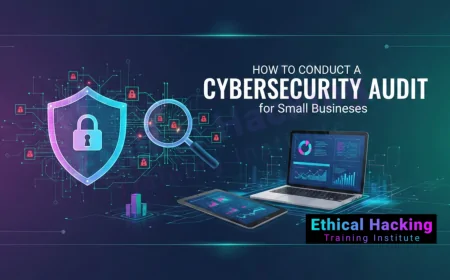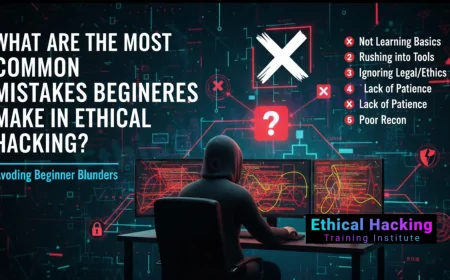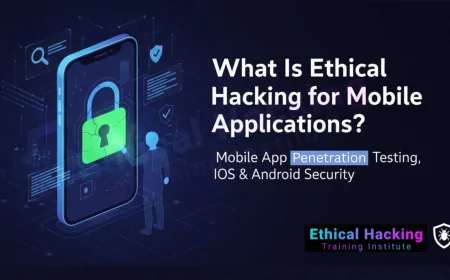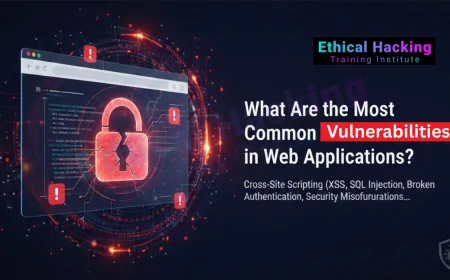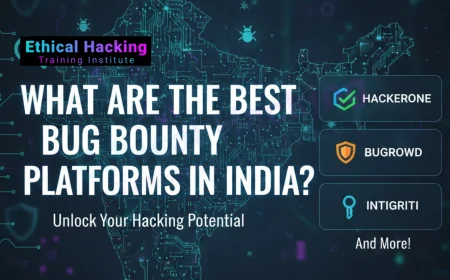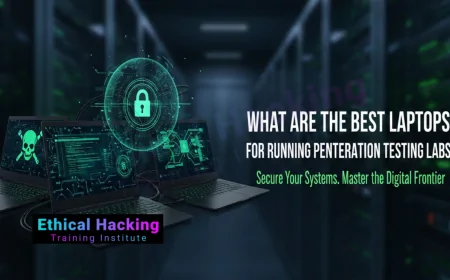Cyber Security Hacking Course: How to Defend Systems and Networks from Hackers | Cyber Security for Beginners: Hacking Courses That Teach You to Fight Back
Learn how to defend systems and networks from hackers with top cybersecurity hacking courses. Build defensive skills, tools, and career pathways.
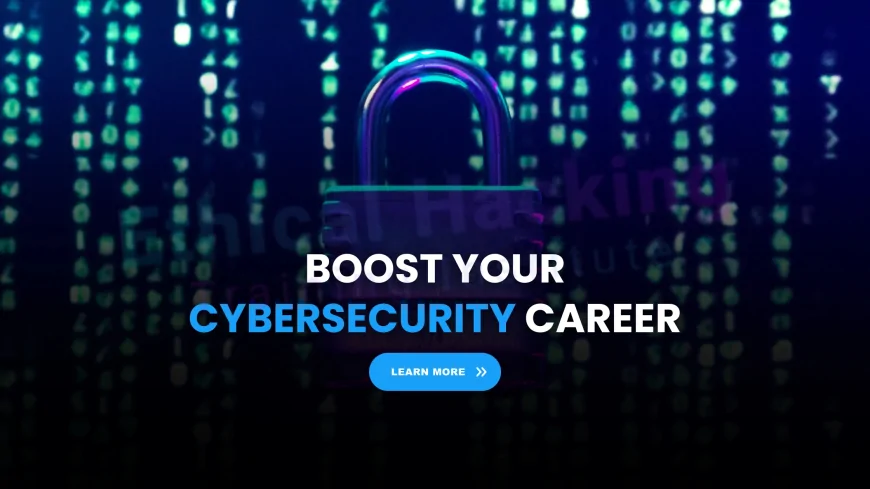
Table of Contents
- Introduction
- Why Focus on Defense?
- Core Concepts in Network & System Defense
- Recommended Certifications & Courses
- Building a Defense Lab
- Essential Tools & Technologies
- Learning Path – From Beginner to Expert
- Career Roles & Salary Outlook
- Best Practices for Defense Professionals
- Frequently Asked Questions
- Conclusion
Introduction
As cyber attacks grow in sophistication, the defense side—blue team—becomes increasingly critical. A “Cyber Security Hacking Course” that focuses on defensive tactics equips learners to anticipate, detect, and neutralize malicious attacks on systems and networks. In this guide, we delve into what such courses offer in 2025, how they're structured, core tools and techniques, career paths, and whether they truly prepare you to secure digital assets.
Why Focus on Defense?
- Attack-preemptive thinking: Understanding hacking techniques is vital to develop effective countermeasures.
- Compliance & standards: Regulations like GDPR, HIPAA require timely incident detection and proactive defense.
- Growing demand: Security operations roles (SOC Analyst, Incident Responder) outpace offensive roles in many organizations.
- Integral to security posture: Defense strategies, detection, and threat hunting shape organizational resilience.
Core Concepts in Network & System Defense
- Defense-in-depth: Multiple layers of security controls—network, host, application, physical.
- Threat intelligence: Using real-time threat feeds and indicators of compromise (IoCs).
- SIEM & log analysis: Tools like Splunk or ELK to correlate logs and spot anomalies.
- Incident response: Preparation, containment, eradication, and post-mortem for cybersecurity events.
- Network monitoring: Packet sniffers (Wireshark), IDS/IPS systems (Snort, Suricata).
- Endpoint defense: AV/EPP solutions, HIPS, endpoint hardening, patch and vulnerability management.
- Cloud & container defense: AWS/Azure security configurations, Kubernetes RBAC, container scanning.
Recommended Certifications & Courses
CEH – Certified Ethical Hacker (Blue Team Perspective)
CEH isn't only offensive—its curriculum includes intrusion detection, evasion techniques, and defensive countermeasures. CEH v13 introduces defense strategies integrated into attack detection. Ideal for foundational red/blue crossover skills.
CompTIA Security+ & PenTest+
Security+ covers essential defense topics like secure network configuration and vulnerability assessment. PenTest+ builds on defensive analytics, focusing on understanding exploitation to better prevent it.
SANS Security Certifications (GSEC, GCIH)
SANS offers robust blue-team training. GSEC focuses on real-world defensive skills, log analysis, and incident handling. GCIH specializes in detecting and mitigating intrusions and incident response.
OSCP with Defensive Lens
OSCP is known for offense, but the underlying tactics are essential for defense. Many OSCP-skilled professionals transition into hardened roles using their deep understanding of exploits to build resilient defenses.
Blue Team & SOC Specialist Courses
Dedicated blue team courses—like those from Cybrary, Udemy, Coursera, and Pluralsight—focus on SOC operations, threat hunting, incident response, and defensive tool administration (e.g., Splunk, Elastic, Carbon Black).
Building a Defense Lab
- Virtual Networks: Use VirtualBox or VMware to simulate multiple hosts, firewalls, and servers.
- SIEM Stack: Build ELK or Splunk test environments for log ingestion and alerting.
- IDS/IPS: Deploy Snort or Suricata appliances and try tampering to detect anomalies.
- Threat Simulation: Execute benign tools like Mimikatz or Metasploit in isolated labs to generate logs and alerts.
- Cloud Components: Create AWS free-tier or Azure sandbox environments to explore cloud defense.
Essential Tools & Technologies
- Wireshark, tcpdump—network traffic analysis
- Snort, Suricata—intrusion detection/prevention
- Splunk, ELK Stack—log correlation, dashboards, alerting
- OSQuery, Wazuh—endpoint monitoring
- Metasploit—used defensively for testing detection rules
- Sysinternals—Windows diagnostic & forensic tools
- Zeek (Bro)—advanced network monitoring
- AWS Inspector, Azure Defender—cloud security tools
Learning Path – From Beginner to Expert
- Foundation: Learn networking, Linux, scripting (Python/Bash), and Windows basics.
- Beginner Cert: Security+ or CEH for structured foundational knowledge.
- Intermediate: GSEC or GCIH for log analysis, incident handling, and advanced tactics.
- Hands-on Practice: Set up labs and simulate incidents using blue team tools.
- Advanced: Get OSCP to understand attacker techniques deeper and improve defense logic.
- Specialize: Cloud security, threat hunting, digital forensics, or SOC operations.
- Leadership track: Pursue management certs like CISSP or CISM to advance into managerial roles.
Career Roles & Salary Outlook
- SOC Analyst: ₹4–8 LPA / 50–70 k USD entry-level
- Incident Responder: ₹8–15 LPA / 70–100 k USD mid-level
- Threat Hunter: ₹15–30 LPA / 80–120 k USD experienced
- Security Architect: ₹20–40 LPA / 100–150 k USD senior
- CISO: ₹50 LPA+ / 150 k+ USD leadership level
Best Practices for Defense Professionals
- Continuously monitor: Keep security rules up to date—don’t ignore alerts.
- Engage with threat intel: Subscribe to reputable feeds and CVE alerts.
- Practice simulations: Host regular purple team drills using red and blue tactics.
- Automate responses: Use scripts and playbooks to remediate common threats.
- Document everything: Maintain incident reports, root-cause analysis, and compliance audits.
Frequently Asked Questions (FAQs)
1. What is a blue team?
A blue team is responsible for defending systems and networks—monitoring, detecting, and responding to cyber threats.
2. Do I need CEH for defense?
CEH provides valuable insight into attacker tactics, but other courses like GSEC or Security+ are equally effective for defense roles.
3. Is OSCP helpful for defenders?
Absolutely. Understanding advanced attack techniques helps defenders build stronger detection and response systems.
4. How do I set up a SIEM lab?
Use ELK or Splunk free versions, generate logs via simulated attacks, and create custom alert rules.
5. What tools should I learn first?
Start with Wireshark, Snort, and Splunk—core tools for network and log analysis.
6. Can defense roles be remote?
Yes—many SOC Analyst and Threat Hunting roles are fully remote or hybrid.
7. What's a purple team?
Purple teams combine red (offense) and blue (defense) to test defenses and improve security operations collaboratively.
8. Do I need scripting skills?
Yes—Python or Bash is essential for log parsing, alert automation, and tool integration.
9. How often should I train?
Regular weekly labs and simulated incident drills are recommended to stay sharp.
10. Is threat intelligence necessary?
Yes—staying current on attacker methods and IOC feeds aids proactive defense.
11. What certifications lead to defense roles?
Security+, GSEC, GCIH, OSCP (with defensive use) and SOC-specific training are most relevant.
12. How do I build a portfolio?
Document simulated incidents, dashboard setups, alert triggers, and remediation reports.
13. Are defense jobs in demand?
Yes—especially in regulated sectors like finance, healthcare, and government.
14. Should I pursue cloud defense?
Absolutely—cloud skills are increasingly essential across industries.
15. What's the career progression path?
Start as SOC Analyst → Incident Responder → Threat Hunter → Security Architect → CISO.
16. Are there community labs?
Yes—resources like Blue Team Village, CyberDefenders, and open-source projects offer labs and training.
17. How do I prepare for interviews?
Practice incident walk-throughs, SIEM scenarios, and mock troubleshooting interviews.
18. What compliance frameworks exist?
Common frameworks include NIST, ISO 27001, GDPR, HIPAA—they guide defense standards and evidence collection.
19. What’s the difference between IDS and IPS?
IDS detects suspicious activity and alerts, while IPS blocks traffic in real time.
20. Can defense roles lead to offensive roles?
Yes—many professionals transition between blue and red roles through purple teamings or certifications like OSCP.
Conclusion
Defensive cybersecurity is just as vital as offensive skills. A robust blue-team training path empowers you to anticipate threats and build systems that resist real-world attacks. With structured learning, industry certifications, hands-on labs, and continuous practice, you can start a rewarding career in cyber defense and help safeguard critical infrastructure against evolving threats.
What's Your Reaction?
 Like
0
Like
0
 Dislike
0
Dislike
0
 Love
0
Love
0
 Funny
0
Funny
0
 Angry
0
Angry
0
 Sad
0
Sad
0
 Wow
0
Wow
0
